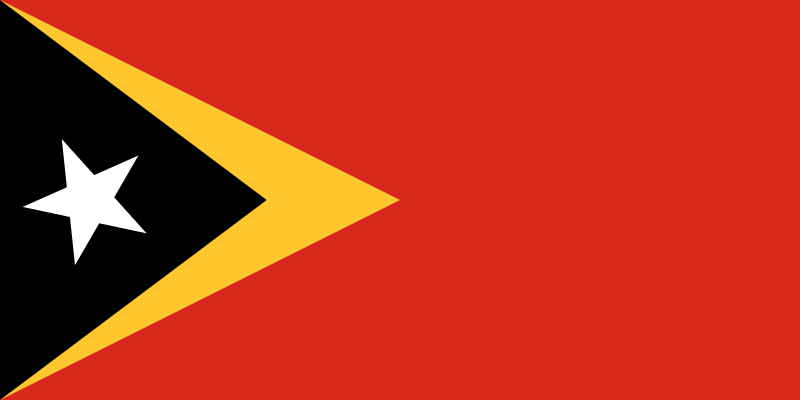 Timor-Leste, also known as East Timor (Tetum: Timór-Leste; officially the Democratic Republic of Timor-Leste) is a country in Southeast Asia. It comprises the eastern half of the island of Timor, the nearby islands of Atauro and Jaco, and Oecusse, an exclave on the northwestern side of the island, within Indonesian West Timor. The small country of 15,410 km² (5,400 sq mi) is located about 640 km (400 mi) northwest of Darwin, Australia.
Timor-Leste, also known as East Timor (Tetum: Timór-Leste; officially the Democratic Republic of Timor-Leste) is a country in Southeast Asia. It comprises the eastern half of the island of Timor, the nearby islands of Atauro and Jaco, and Oecusse, an exclave on the northwestern side of the island, within Indonesian West Timor. The small country of 15,410 km² (5,400 sq mi) is located about 640 km (400 mi) northwest of Darwin, Australia.
East Timor was colonized by Portugal in the 16th century, and was known as Portuguese Timor until Portugal’s decolonization of the country. In late 1975, East Timor declared its independence, but later that year was invaded and occupied by Indonesia and was declared Indonesia’s 27th province the following year. In 1999, following the United Nations-sponsored act of self-determination, Indonesia relinquished control of the territory and East Timor became the first new sovereign state of the 21st century on May 20, 2002.
East Timor is one of only two predominantly Roman Catholic countries in Asia, the other being the Philippines.
East Timor is a lower-middle-income economy. It continues to suffer the after effects of a decades-long independence struggle against Indonesia, which damaged infrastructure and displaced thousands of civilians. It is placed 162nd by Human Development Index (HDI) among the world’s states, the second lowest in Asia.
The culture of East Timor reflects numerous influences, including Portuguese, Roman Catholic, and Malaysia, on the indigenous Austronesian and Melanesian cultures of Timor. Legend has it that a giant crocodile was transformed into the island of Timor, or Crocodile Island, as it is often called. East Timorese culture is heavily influenced by Austronesian legends, although the Catholic influence is also strong. There is a strong tradition of poetry. Prime Minister Xanana Gusmão, for example, is a distinguished poet. As for architecture, some Portuguese-style buildings can be found, along with the traditional totem houses of the eastern region. These are known as uma lulik (sacred houses) in Tetum, and lee teinu (houses with legs) in Fataluku. Craftsmanship is also widespread, as is the weaving of traditional scarves or tais.

Notes from Wikipedia








